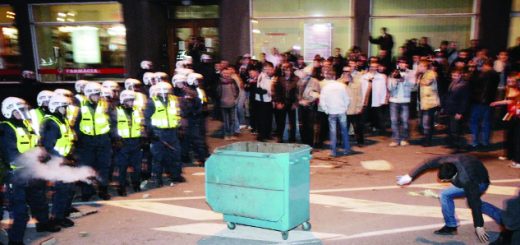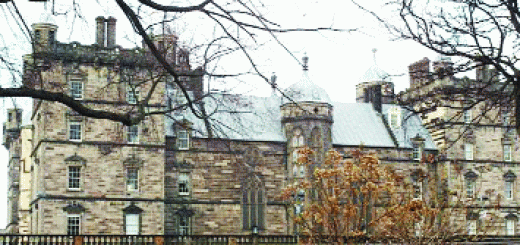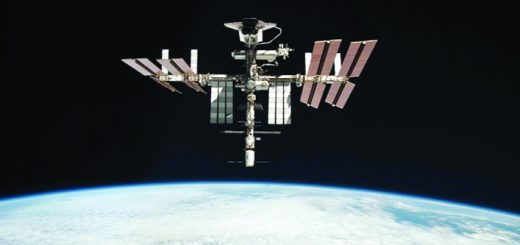Africa’s ‘Great Green Wall’
Africa’s “Great Green Wall” initiative is a proposed 8,000-kilometer line of trees meant to hold back the Sahara from expanding southward. New climate simulations looking to both the region’s past and future suggest this greening could have a profound effect on the climate of northern Africa, and even beyond.
By 2030, the project aims to plant 100 million hectares of trees along the Sahel, the semiarid zone lining the desert’s southern edge. That completed tree line could as much as double rainfall within the Sahel and would also decrease average summer temperatures throughout much of northern Africa and into the Mediterranean, according to the simulations, presented December 14 during the American Geophysical Union’s fall meeting. But, the study found, temperatures in the hottest parts of the desert would become even hotter.
Previous studies have shown that a “green Sahara” is linked to changes in the intensity and location of the West African monsoon. That major wind system blows hot, dry air southwestward across northern Africa during the cooler months and brings slightly wetter conditions northeastward during the hotter months.
Such changes in the monsoon’s intensity as well as its northward or southward extent led to a green Sahara period that lasted from about 11,000 to 5,000 years ago. Some of the strongest early evidence for that greener Sahara of the past came in the 1930s, when Hungarian explorer László Almásy — the basis for the protagonist of the 1996 movie The English Patient — discovered Neolithic cave and rock art in the Libyan Desert that depicted people swimming.
Past changes in the West African monsoon are linked to cyclical variations in Earth’s orbit, which alters how much incoming solar radiation heats up the region. But orbital cycles don’t tell the whole story, says Francesco Pausata, a climate dynamicist at the Université du Québec à Montréal who ran the new simulations. Scientists now recognize that changes in plant cover and overall dustiness can dramatically intensify those monsoon shifts, he says.
More vegetation “helps create a local pool of moisture,” with more water cycling from soil to atmosphere, increasing humidity and therefore rainfall, says Deepak Chandan, a paleoclimatologist at the University of Toronto who was not involved in the work. Plants also make for a darker land surface compared with blinding desert sands, so that the ground absorbs more heat, Chandan says. What’s more, vegetation reduces how much dust is in the atmosphere. Dust particles can reflect sunlight back to space, so less dust means more solar radiation can reach the land. Add it all up, and these effects lead to more heat and more humidity over the land relative to the ocean, creating a larger difference in atmospheric pressure. And that means stronger, more intense monsoon winds will blow.
The idea for Africa’s Great Green Wall came in the 1970s and ’80s, when the once-fertile Sahel began to turn barren and dry as a result of changing climate and land use. Planting a protective wall of vegetation to hold back an expanding desert is a long-standing scheme. In the 1930s, President Franklin Roosevelt mobilized the U.S. Forest Service and the Works Progress Administration to plant walls of trees from the Great Plains to Texas to slow the growth of the Dust Bowl. Since the 1970s, China has engaged in its own massive desert vegetation project — also nicknamed the Great Green Wall — in an attempt to halt the southward march of sand dunes from the Gobi Desert.
Led by the African Union, Africa’s Great Green Wall project launched in 2007 and is now roughly 15 percent complete. Proponents hope the completed tree line, which will extend from Senegal to Djibouti, will not only hold back the desert from expanding southward, but also bring improved food security and millions of jobs to the region.
What effect the finished greening might ultimately have on the local, regional and global climate has been little studied — and it needs to be, Pausata says. The initiative is, essentially, a geoengineering project, he says, and when people want to do any type of geoengineering, they should study these possible impacts.
To investigate those possible impacts, Pausata created high-resolution computer simulations of future global warming, both with and without a simulated wall of plants along the Sahel. Against the backdrop of global warming, the Great Green Wall would decrease average summertime temperatures in most of the Sahel by as much as 1.5 degrees Celsius.
But the Sahel’s hottest areas would get even hotter, with average temperatures increasing by as much as 1.5 degrees C. The greening would also increase rainfall across the entire region, even doubling it in some places, the research suggests.
These results are preliminary, Pausata says, and the data presented at the meeting were only for a high-emissions future warming scenario called RCP8.5 that may not end up matching reality. Simulations for moderate- and lower-emissions scenarios are ongoing.
The effects of greening the Sahara might extend far beyond the region, the simulations suggest. A stronger West African monsoon could shift larger atmospheric circulation patterns westward, influencing other climate patterns such as the El Niño Southern Oscillation and altering the tracks of tropical cyclones.
Chandan agrees that it’s important to understand just what impact such large-scale planting might have and notes that improvements in understanding what led to past changes in the Sahara are key to simulating its future. That the Great Green Wall’s impact could be far-ranging also makes sense, he says: “The climate system is full of interactions.”
Written By Carolyn Gramling
















Recent Comments